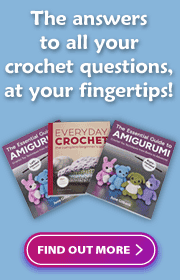The complete Temperature Snake pattern and workbook are now available! Click here for details >> There are just 4 days remaining until the 2023 Temperature Snake CAL begins in earnest on January 1st – have you picked up the Temperature Snake crochet pattern yet? If not, now’s the perfect time: you’ll need a little time […]

Archive for December 2022
Giant Crocheted Christmas Tree
Would you like to see something amazing? Loooook what I made!! My giant crocheted Christmas Tree is 108cm (42.5″) tall! Everything you see here is made from a PlanetJune Christmas-themed crochet pattern – including the tree! – so this truly is a PlanetJune Christmas Tree. There’s quite a story to how I brought this project […]
review: ARTDOT diamond painting accessories
Before we begin: ARTDOT provided these products to me for review, and set up an affiliate account for me, but I’m not being compensated for this review, and, as always, my opinions are my own! Do you take time off over the holidays to relax and decompress? I love to stay home and do jigsaw […]
Snake Collection crochet pattern & Temperature Snake CAL
Guess what? It’s time! The Temperature Snake CAL is now ready to launch, as well as my brand new Snake Collection pattern, and if you buy both the CAL pattern and the Snake Collection pattern together, you’ll get a special bundle deal! For the CAL details, see my Temperature Snake CAL blog post, and for […]
new Ultimate Stripes for Amigurumi [video tutorial]
No time to read this post? Jump straight to the new Ultimate Stripes for Amigurumi tutorial! >> In 2012, I first presented the two amigurumi ‘Perfect Stripes’ techniques I’d developed (the Invisible Join and No-Cut Join), and they were vastly superior to any of the other techniques that existed at the time. But now, a […]














